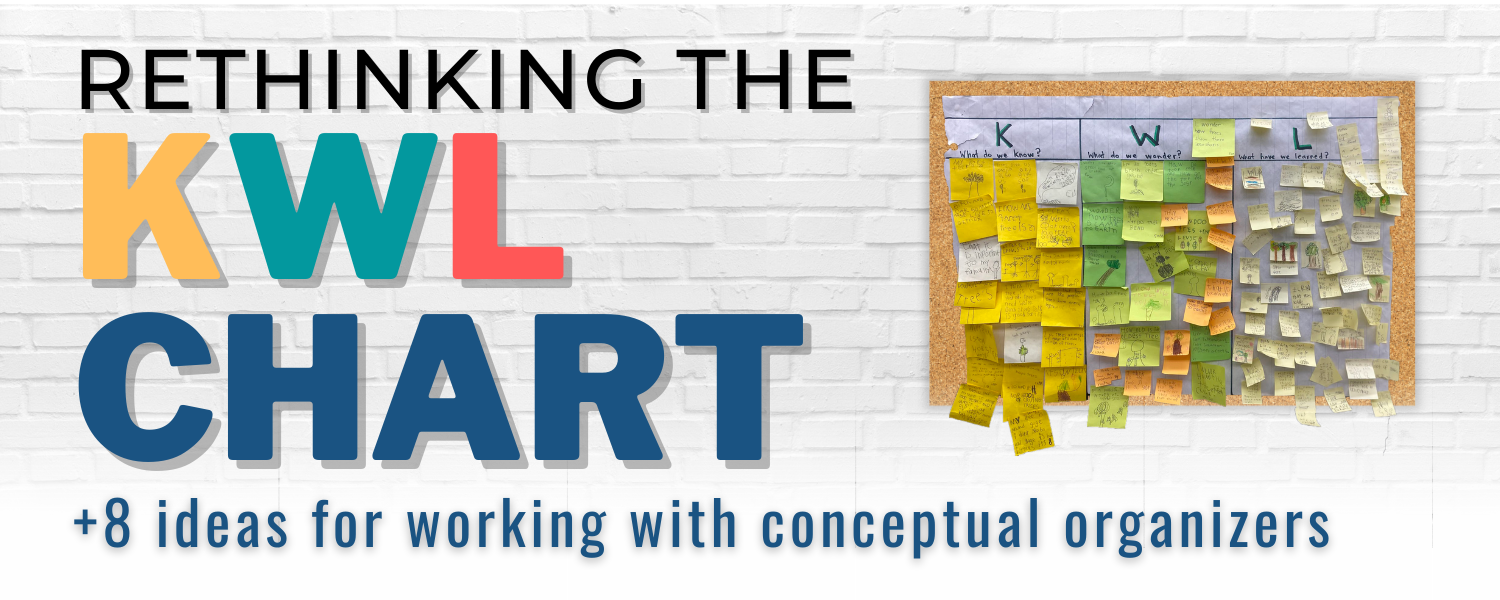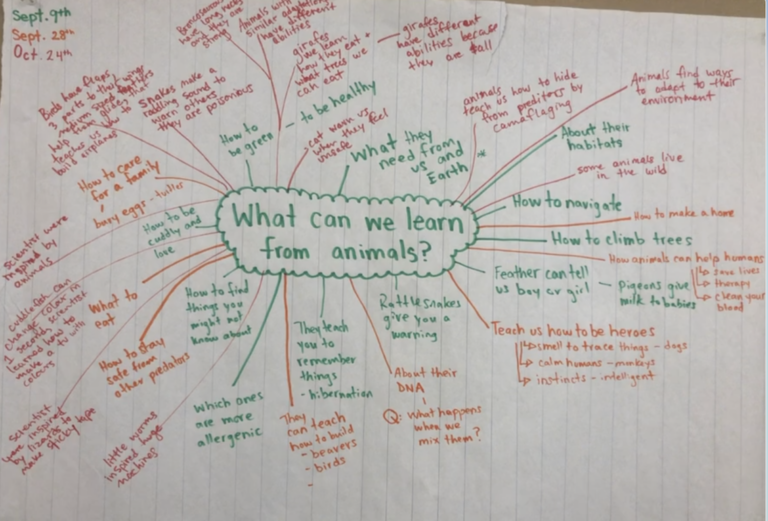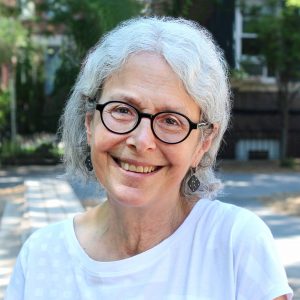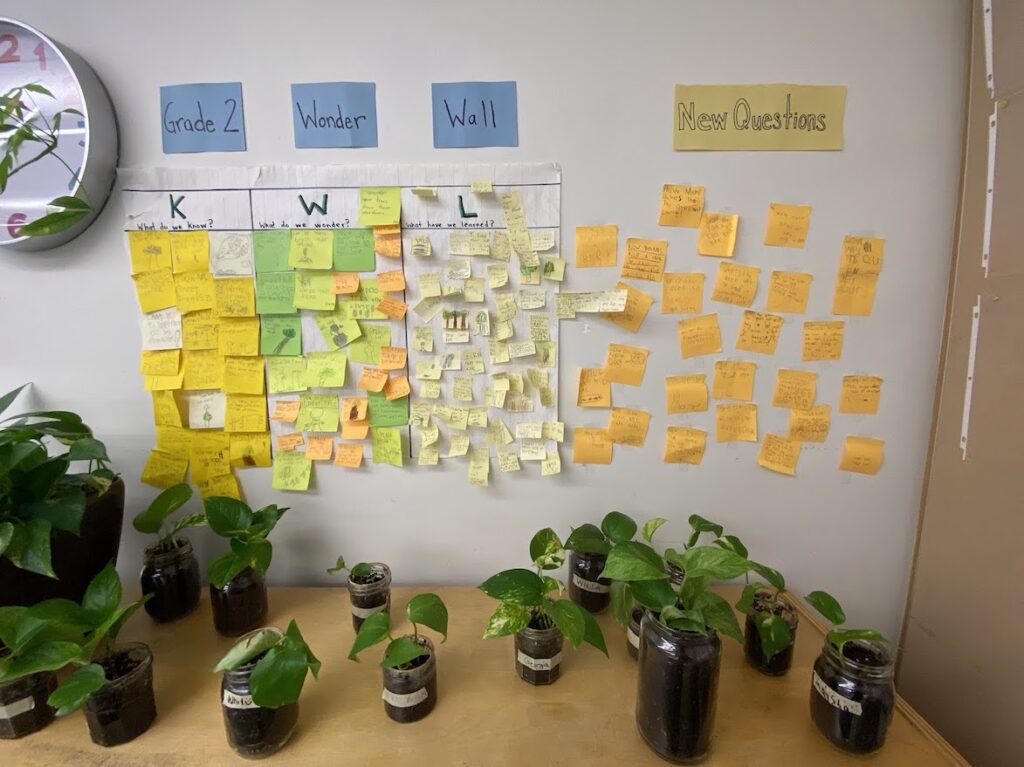
At a parent event in September, a teacher points to a series of colourful, student-completed “KWL” charts related to their science exploration into light and sound. The charts reflect her commitment to student-driven learning, she explains. The charts are a little too high on the wall to decipher, but everyone can see that the K and W columns are packed with writing while the empty “L” column shows the promise of learning to come.
Returning in December for a parent-teacher conference, a parent notices that the charts are still on the wall, the L column still blank. Talking later with a friend, she expresses confusion: “They get the kids to write down what they know before they know anything about a topic, then the kids have to figure out what they still don’t know, but they never get around to answering those questions. What’s the point of it all?”
There are, of course, many reasons why a teacher might have dropped the ball on one particular unit under an unknown set of circumstances – probably many of us have been there at some point. Did the study end up taking a different direction? Were the original questions too poorly formulated to answer? Or might the children’s questions have failed to address the learning the teacher (or mandated curriculum) already had in mind? All too often, we go through the motions of asking kids what they think, even what they care about, then proceed to teach what we think they need to know. There’s a glaring disconnect between the description and the reality.
It can be discouraging to watch children as they glumly set to the chore of filling in a graphic organizer intended to promote engagement. While classrooms abound in learning systems for keeping chaos at bay, these protocols and routines all too easily take on a life of their own, divorced from their original purpose.
KWL chart example
Student ideas have been categorized under the following headings: “Know, Wonder and Learning.” A fourth column has been added: “More Questions.”
8 ideas for working with conceptual organizers
What is gained and what is lost when we bring schemes such as the KWL chart to the diverse experiences and buzzing concerns of 30+ students? On the face of it, asking students to clarify their background knowledge (K), what they want to know (W) and subsequent new learning (L) helps to bring order, focus and momentum to student ideas, making them available for reflection and strategic planning of next steps. In theory, at least, this approach supports what we know about how children learn best, by making explicit the connections between existing knowledge and curiosities, on the one hand, and new learning, on the other. In prompting students to reflect upon their own states of knowledge and thought, a KWL approach seems made for developing the metacognitive acuity that has been repeatedly demonstrated to enrich learning across many disciplines.
And yet, despite the best of intentions, educational institutions have an unfortunate way of co-opting some of the most interesting and important ideas about learning in ways that box out their essence. When pedagogic methods become entrenched through impenetrable acronyms or shorthand slogans such as “KWL”, “Think-Pair-Share”, “5E model” (and so on), the codification of real-world processes in specialized jargon may too tidily obscure their essential messiness. The most cursory glance at the history of science tells us that science isn’t neat. Packaging kids’ ideas to make them more manageable for teachers and the system as a whole may end up attributing to neither children nor the subject matter the respect they deserve.
A Brief History
Originally introduced by Donna Ogle in 1986 to support reading comprehension, the promise of the KWL approach in content areas such as science was quickly recognized.
“K-W-L, used properly, is actually radical. To begin with, it’s collaborative… [Children are asked to] engage in a conversation with their peers that has the potential to deepen each child’s initial ideas… It’s children’s questions that actually drive the lesson – as opposed to a list of prefabricated outcomes. The learning is owned by the learners,” American educator Alfie Kohn wrote in 2015. “The primary lesson is located between anticipation of what we’re about to do and consideration of what we just did. That kind of strategy can be enormously useful for just about any kind of learning… For meaningful learning, you don’t just do it; you anticipate and then you process.” (Kohn, 2015)
More formal research has yielded mixed results. While some studies have identified benefits of KWL approaches for science learning (e.g. Alsahi, 2019), others have failed to show a difference or found other conceptual organizers to be more effective (e.g., Hopkins, 2013). However, differences in outcome measures, classroom settings, and teachers make definitive comparisons among studies challenging.
Issues arise when KWL strategies becomes empty formalities. When students are asked to come up with a list of questions on the spot and jot down the few facts they may or may not have at hand (and may or may not care about), questioning can become one more meaningless school task, with little authentic connection to what follows or to a genuine desire to know. Instead of fostering engagement, the task then risks draining the curiosity out of children’s questions, leaving behind the merest shell of student-driven inquiry.
Packaging kids’ ideas to make them more manageable for teachers and the system as a whole may end up attributing to neither children nor the subject matter the respect they deserve.
Concerns with KWL’s potential for oversimplification, especially in science, have led to various modifications that aim to better capture the complexity and nuance of science inquiry. Examples include the Think-Puzzle-Explore model, stressing the provisional nature of knowledge and open-ended, exploratory learning possibilities (Ritchart & Perkins, 2008) or KLEWS – What do we think we know? What are we learning? What is our evidence? What do we still wonder about? What scientific principles can explain the phenomena? – to encourage evidence-based theory-building (Hershberger, K. and Zembal-Saul, C., 2015). Finally, in this contest of proliferating initials, we find the KWHLAQ chart, “briefly” summarized as What do we think we know? What do we need to find out? How will we find the answers to our questions? What are we learning, what have we learned? What action will we take? What new questions do we have? (Tolisano, 2015)
Each of these amendments, along with numerous other examples in science education, sets out to capture something of significance lacking in the original model. However, as with all models, there’s a trade-off between complexity and manageability; as each succeeding format sets out to address the flaws of its predecessor, it becomes increasingly unwieldy to work with, losing the ready implementability – for both teachers and students – that made the KWL formulation so appealing in the first place.
An educator's alternative to KWL: Layered Brainstorm Chart
Grade 2 teacher David Osorio sees both advantages and drawbacks to using KWL charts in science inquiry. He notes that they can create a misleading sense of community understanding that may fail to adequately bring out the thinking, interests and learning of less engaged or vocal students.
“He has recently moved to creating “a layered brainstorm chart” that documents those more in-depth Knowledge Building discussions.
“I start with a question or a term and let the children share what they know or what they want to know, and I record as much as I can,” David says. “I record what they share in a different colour to see how the conversation has evolved and document how their knowledge sharing is growing more complex.”
The class then spends time researching and answering some of the questions before adding to the brainstorm chart. “Students can see the progress in their understanding and we can build on to each other’s ideas. It also allows me to refer to previous comments and clarify misunderstandings. It is an evolving snapshot of how the group builds knowledge together.”

A layered brainstorm chart from one of David Osorio’s Grade 2 science inquiries.
Drawbacks to KWL models
While the KWL model and its heirs purport to situate child-focused inquiry at the nexus of existing beliefs, driving questions and new input, there are inevitably costs to a pedagogical structure that predetermines (and thereby limits) desirable categories of thought and learning. Not all scientific investigations follow an identical linear process, moving efficiently from knowledge to questions to answers. How a scientist moves through an investigation will depend upon their individual circumstances, field of discovery, and a degree of happenstance. From a developmental perspective, questions are not the only mode through which kids naturally express their wonderings, confusions, or need for information. By limiting the expression of ideas to (often written) language, we miss many important understandings and misunderstandings that subtly emerge through less verbal modes such as drawing, gesturing, physical activity, or imaginative play.
We also can’t ignore the profoundly different cultural modes through which people express interest, recognizing that the encouragement of verbalization and questioning so prevalent in middle class households of European origin may not be universal. We owe it to our students to tune into other ways, such as close observation, that also indicate what a child considers worth paying attention to.
We owe it to our students to tune into other ways, such as close observation, that also indicate what a child considers worth paying attention to.
KWL-type models oversimplify the process of coming to know by highlighting information over thinking. They may also fail to credit the complicated mix of interactions among wondering, experiencing, thinking and rethinking, feeling, observing, and questioning. Even the demarcation between questions and answers can be murkier than the model suggests. Children don’t always know from the start what they know or think or wonder, especially when a topic is unfamiliar. You need questions to build knowledge, but you also need knowledge to pose questions; the more you know, the more you know precisely what you want to ask. At its most limited, the KWL chart represents a closed process of learning that rests upon a narrow view of curiosity as a drive simply satisfied by the acquisition of a relevant piece of information. This is only one facet of curiosity, as recent work in the area suggests. (Zurn and Shankar, 2020)
Although the KWL method has been touted for its capacity to level the playing field, any instructional system, rigidly applied, fails to accommodate the individuality of both teachers and learners. Succinctly filling out pre-set columns in advance of learning is not how everyone thinks best or best expresses their thinking. It’s true that a little structure – even in the face of resistance – can bring focus and direction to the haphazard attentions of some students. Others, who eagerly embrace the predictability offered by well-defined frameworks, may benefit from gentle encouragement to tolerate uncertainty. There is no one size that fits all.
An alternative to KWL:
Knowledge Building
Circle
Educator Zoe Donoahue leads her class in a discussion exploring what might be beneath the ground we walk on.
Fostering Curiosity
The value of curiosity in learning has become a truism in education. Educators commonly list it among the five most important factors in student achievement (Engel, 2015). Science curricula, including our most recent Ontario documents, stress its importance. Research repeatedly shows the effect on motivation and learning. At the same time, classroom observations have documented a notable scarcity of opportunities for the kinds of spontaneous questions or explorations that truly engage a child. Engel, for example, cites the dramatic reduction of questioning which occurs upon children’s entry into school.
Adults play a powerful role in sustaining and furthering children’s curiosity. How they respond to questions and other expressions of interest makes an enormous difference to children’s inclination to keep asking and persevere with finding out. “When given insufficient or vague answers, students’ attention often wanders, and their desire for knowledge dissipates. Curiosity is a natural drive, but one that is easily suppressed. A lack of encouragement, an absence of adult figures, and insufficient answers can all extinguish curiosity’s flame.” (Markey and Lowenstein, 2014).
In school, one critical factor is the teacher’s own interest in how a child thinks about things that matter to them. As science educator Eleanor Duckworth comments, “The more I was interested in what they were thinking, the more they were interested in their thinking” (Duckworth, 2012). Curiosity begets curiosity.
8 ideas for working with conceptual organizers.
1. Rather than assigning KWLs as a preliminary task that may only tap the knowledge of a few students, start with a more open-ended discussion based upon a common experience (such as a read aloud, experiment or exploratory walk) that creates a shared focus among students and allows for existing understandings, hypotheses and questions to freely emerge.
2. Instead of asking students to offer ideas that fit into predetermined KWL categories, first gather ideas from students then co-create a chart in which they categorize these ideas.
3. Avoid using a KWL chart as a pretest/post-test type of assessment.
4. Present a KWL document as a work in progress. Display it at eye level so students can independently refer to and add to it. Frequently revisit the chart and note changes in thinking or direction.
5. Learning is multi-directional. New knowledge inspires new questions and revisions of old theories and questions. Make explicit for students these shifting relationships and back-and-forth movements among knowing, wondering and new ideas.
6. Be alert to questions or observations that spontaneously arise at unexpected moments. Recognize that not all interest is expressed in a classic question format.
7. Acknowledge that there are many kinds of questions, and that each plays a valuable role in constructing understanding.
8. Asking a question is only the first step in finding something out. Help your students reflect upon, refine, and investigate their own questions.
Teachers
Cognitive psychologist Jerome Bruner famously wrote, “You cannot teacher-proof a curriculum any more than you can parent-proof a family”. In the end, which system a teacher adopts matters less than how they put it to use. Pedagogical technique is nothing apart from the teacher: their quality of attention; their own curiosity, both about children and about the world; their openness to surprise, upended assumptions, and spontaneous wonderings; their delight in the messy zigzagging and backtracking of true learning. It takes skill, artfulness and imagination to select just the right materials, information or experiences to intrigue a diverse set of students and maintain the momentum of their inquiry. A teacher’s genuine interest in the subject matter itself is contagious, as they stay just ahead of – or at least keep up with – the understandings, misunderstandings and musings of their students.
A teacher’s genuine interest in the subject matter itself is contagious, as they stay just ahead of – or at least keep up with – the understandings, misunderstandings and musings of their students.
Many have remarked that open-minded curiosity about other perspectives may be one key to preserving democracy in polarized times. The multiplicity of personalities and approaches found in any classroom, from the quietest observer to the most boisterous explorer, the fact-obsessed statistician to the philosopher, offers both a challenge and an opportunity in which every participant in a common journey has a deep-seated capacity to enrich the thinking of the others.
In the hands of a responsive, interested teacher, the KWL chart may offer one way of tuning into the worlds of children, of gleaning what they really think and helping them identify and refine what it is that they think. It is, of course, simply one means among many, including informal conversation, modelling, drawing, or simply taking the time to read a face.
References
Alsahi, N.R. (2020). The effects of the know-want to know-learn strategy (KWL) on fourth grade students’ achievement in science at the primary stage and their attitudes towards it. EURASIA Journal of Mathematics, Science, and Technology Education, 16(4).
Duckworth, E. (2012). When teachers listen and learners explain. [Video]. YouTube. https://www.youtube.com/watch?v=1sfgenKusQk
Engel, S. (2015). The Hungry Mind: The Origins of Curiosity in Childhood. Harvard University Press: Cambridge, MA.
Hershberger, K. and Zembal-Saul, C. (2015). Methods and strategies: KLEWS to explanation building in science. Science and Children, 52, 66-71.
Hopkins, M.D. (2013). The effects of student-led and teacher-led advance organizers on students’ achievement and motivation of high school biology students. Unpublished doctoral dissertation.
Kohn, A. (posted June 2, 2015). Learning as a sandwich. Psychology Today https://www.psychologytoday.com/intl/blog/the-homework-myth/201506/learning-sandwich.
Markey, A., & Loewenstein, G. (2014). Curiosity. In R. Pekrun & L. Linnenbrink-Garcia (Eds.), International handbook of emotions in education (pp. 228–245). Routledge/Taylor & Francis Group.
Ogle, D. (1986). K-W-L: A teaching method that develops active reading of expository texy. The Reading Teacher, 39, 564-570.
Ritchart, R. and Perkins, D. (2008). Making thinking visible. Educational Leadership, 65, 57-61.
Tolisano, S. (2015). An update to the upgraded KWL for the 21st Century. http://langwitches.org/blog/2015/06/12/an-update-to-the-upgraded-kwl-for-the-21st-century/
Zurn, P. and Shankar, A.(Eds.) (2020). Curiosity Studies: A New Ecology of Learning. University of Minnesota Press.
Author

Dr. Julie Comay
Robertson Education Specialist, Professor (OISE/U of T), Former Classroom Teacher


Many of your 8 ideas for conceptual organizers can be applied to a KWL charts (1,3-8). I don’t even use KWL charts but I would have appreciated the article more if it focused on the benefits of a particular inquiry strategy rather than diatribe against frankly a pretty neutral (but flexible) one in KWL charts.